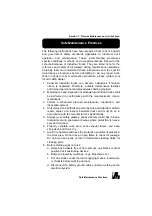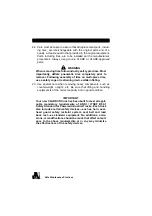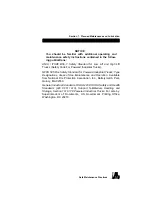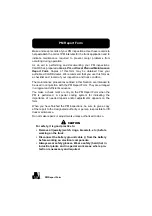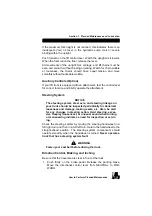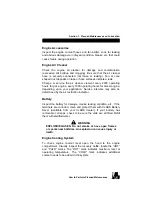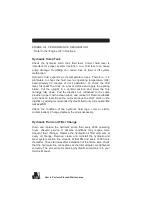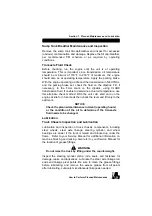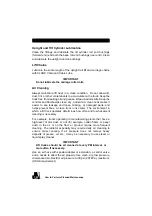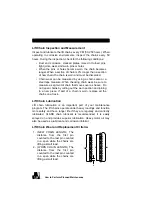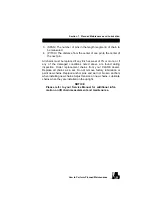
How to Perform Planned Maintenance
7-15
Section 7. Planned Maintenance and Lubrication
A
10% of "A" is
max. wear
allowed
1.5% is max.
height difference
wear, rust, corrosion, cracked or broken links, stretching, etc. Check
that the lift and carriage chains are correctly adjusted to have equal
tension. Check that the lift chain anchor fasteners and locking means
are in place and tight. Inspect all lift line hydraulic connections for
leaks.
IMPORTANT
Uprights and lift chains require special attention and
maintenance to remain in safe operating condition. Refer
to “Lift Chain Maintenance” in this Section for additional
information.
Forks
Inspect the load forks for cracks, breaks,
bending, and wear. The fork top surfaces
should be level and even with each other.
The height difference between both
fork tips should be no more than
1.5% of the blade length.
WARNING
!
If the fork blade at the heel is worn down by more than 10
%, the load capacity is reduced and the fork must be
replaced.
Inspect the forks for twists and
bends. Put a 2"-thick metal block,
at least 4" wide by 24" long with
parellel sides, on the blade of the
fork with the 4" surface against
the blade. Put a 24" carpenter's
square on the top of the block
and against the shank. Check the
fork 20" above the blade to make
sure it is not bent more than 1"
maximum.
20"
1
"
max
Summary of Contents for C15 D
Page 2: ......
Page 6: ...iv...
Page 16: ...1 4 Seat Belts Seat Belts ALWAYS BUCKLE UP Seat belts can reduce injuries...
Page 30: ......
Page 88: ...5 8...
Page 107: ...PM Report Form 7 13 Section 7 Planned Maintenance and Lubrication...
Page 124: ...7 30...
Page 142: ......
Page 143: ......



